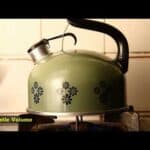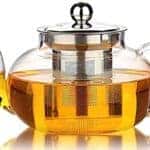Tea Beverages
Tea is one of the world’s oldest beverages, and it is produced…
by soaking dried leaves in water. Many individuals prefer tea over coffee…
…because some blends are more refreshing without the same degree of caffeine.
Tea is complex and offers a wide range of flavors,
,,,from matcha tea used in Japanese tea rituals to old-fashioned sweet tea…
…found in the South.
Tea Varieties
Black tea, green tea, white tea, oolong tea, herbal tea,
…and rooibos tea are some of the most popular tea beverages kinds.
The majority of tea varieties are produced from the Camellia sinensis plant species,
…but some are not formed from tea leaves at all!
Each tea variety has numerous variants,
…and it is usual for additional tastes to be mixed with these types.
Concerning fermentation and oxidation:
Some teas are fermented and oxidized, whilst others are not.
Tea leaves must wither or be crushed by hand before fermentation.
Enzymes on the leaves interact with the air, oxidize,
…and change the chemical composition and color of the leaves throughout this process.
Temperature, humidity, and other air variables…
…may all have a significant impact on tea flavor.
Heat treatments, such as pan-firing or steaming,
…will put an end to the oxidation process.
Now, let’s talk about..
Black Tea
Black tea, also known as red tea in China,
is a popular tea taste that has been totally oxidized.
To generate a robust, full-bodied flavor,
…the leaves of the Camellia sinensis plant are withered,
…rolled, oxidized/fermented, dried, or burned.
Assam, Darjeeling, Nilgiri, and Sri Lanka…
…are a few well-known black tea producing locations,
…and the flavor of black tea varies depending on the region…
…and variety of black tea.
Flavor Profile of Black Tea: malty, full-bodied, and robust
Popular Varieties of Black Tea: Assam tea, Darjeeling tea, Earl Grey tea, and English Breakfast tea.
Green Tea
Green tea is the most popular tea in the world;
…it is unoxidized and has less caffeine than black tea.
To avoid oxidation, Camellia sinensis leaves are plucked, dried, and heat-treated.
Chinese folks frequently pan-fire leaves, resulting in a duller green hue,
…but Japanese people steam them, resulting in a brighter green shade.
Flavor Profile of Green Tea: vegetal/grassy, earthy, bright
Popular Varieties of Green Tea: Matcha, Sencha, Gunpowder Green tea, Dragonwell (Longjing) green tea.
White Tea
White teas are the least processed of all teas,
…manufactured solely in the Fujian region from the leaves of the Camellia sinensis plant.
The leaves are simply let to wither and dry naturally,
…imparting a delicate, naturally sweet, and well-rounded flavor.
It just has a trace of caffeine.
Flavor Profile of White Tea: floral, delicate, fruity
Popular Varieties of White Tea: Silver Needle (Baihao Yinzhen) and White Peony (Bai Mudan).
Herbal Tea
Herbal tea is not made from tea leaves like other types.
It’s prepared using dried herbs, fruits, and flowers,
…which may provide a variety of subtle tastes.
These caffeine-free teas are perfect for consumers with dietary requirements.
Chamomile, ginger, lemongrass, peppermint, rosehips, hibiscus,
…and dried fruits are common herbal infusion components.
Flavor Profile of Herbal Tea: delicate, fruity/herbaceous, sweet
Popular Varieties of Herbal Tea: hibiscus, chamomile, peppermint, Yerba Mate.
Rooibos Tea
Rooibos tea, also known as African Red Tea,
…is a herbal tea made from the leaves of the South African Red Bush.
The leaves are crushed and bruised before being fermented and dried.
Green rooibos tea has a lighter flavor since it is neither oxidized nor fermented.
Flavor Profile of Rooibos Tea: sweet, smooth, earthy
Popular Varieties of Rooibos Tea: red rooibos and green rooibos.
Oolong Tea
Oolong tea, also known as Wulong tea,
…is semi-oxidized and harvested later in the season than green tea.
The leaves are from the Camellia sinensis plant,
…however, they have been damaged by being thrown or shaken in baskets,
…altering the oxidation process. They’re heat-treated to prevent oxidation,
…which might vary by location and result in varied tastes.
Flavor Profile of Oolong Tea: ranges from light and fragrant to dark and full-bodied depending on the oxidation level
Popular Varieties of White Tea: Ti Kuan Yin (Iron Goddess of Mercy) and Dan Cong (Phoenix Tea)
Sum Up
Tea has so many varieties.
You can find the acid one and also the mildest which is the white tea!
Have you ever know the tea differences before?
Conclusion
Now it’s easier to find all kind of tea everywhere in the world.
Since it’s easy to cultivate and also it last forever!
Don’t forget to store it in a dry place and keep it out of humidity!
Find out more about tea beverages and other kinds of foods on our page!
More Related Articles
Was this helpful?
Hi there! I’m a food enthusiast and journalist, and I have a real passion for food that goes beyond the kitchen. I love my dream job and I’m lucky enough to be able to share my knowledge with readers of several large media outlets. My specialty is writing engaging food-related content, and I take pride in being able to connect with my audience. I’m known for my creativity in the kitchen, and I’m confident that I can be the perfect guide for anyone looking to take their culinary journey to the next level.









